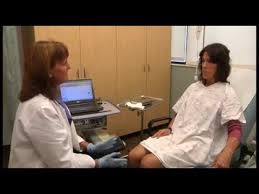Numerous issues can arise in the lower urinary tract, and the underlying pathologies of these diseases and conditions can be complex and unclear. Urodynamics is crucial in enhancing diagnostic accuracy and patient outcomes.
Like other diagnostic tools, urodynamics requires thorough training. Substantial data is produced, and its accuracy relies heavily on precise administration techniques.
Training is vital for healthcare professionals aiming to utilize urodynamics to assist patients. However, developing and implementing a comprehensive curriculum is a challenging task.
Where can your practice seek guidance? Many practitioners rely on established providers like Laborie and Brighter Health Network. If you are new to urodynamics training, here is what to consider when looking for an effective program.
Read More
Topics:
urodynamics training
Urodynamics is a set of tests and procedures that measure lower urinary tract function. These tests are prescribed by urologists, gynecologists, or urogynecologists, and the results from the tests allow them to look at how a patient's lower urinary tract is working. The bladder, sphincters, and urethra (all parts of the lower urinary tract) work together to hold and release urine. Most urodynamic tests are concerned with measuring the ability of your bladder to hold and drain urine completely.
Read More
Topics:
Urodynamics Testing,
urodynamics equipment,
urodynamics training
Urodynamic testing has the potential to provide health care professionals with much more detailed information on the health of their patient’s bladders, urethras, and their body’s ability to store and flush urine. Urodynamics, especially when used in rural health clinics, allows health care professionals to more accurately diagnose causes of urinary incontinence and other issues relating to the bladder and lower urinary system, making it a key service that needs to be integrated into RHC practices.
What Is Urodynamics?
Urodynamics along with urodynamic testing, in its simplest form, is the assessment of how the bladder, urethra, and associated sphincters do their job for storing and releasing urine from the body.
Read More
Topics:
Urodynamics Testing,
BHN,
Reimbursement,
outsourcing diagnostics,
urodynamics,
urodynamics equipment,
urodynamics training,
Reimbursment Trends,
urodynamics staffing,
clinical operations,
urodynamics service provider,
urodynamics billing,
Medical Practice Operations,
Uroflowmetry
2020 and 2021 have shown that urodynamics continues to grow and find unique and novel applications for diagnosing health issues relating to the bladder, urethra, and more. Here we have outlined 4 of the most interesting studies of the past year in the world of urodynamics:
Read More
Topics:
urodynamics,
urodynamics training,
urodynamics staffing,
incontinence,
urodynamics interpretation,
urodynamics service provider,
Urology Practice Trends,
UroGynecology
During a urodynamics study (UDS), there are a variety of pieces of data coming in to the urologist and technician performing the study. Information will be obtained that is both subjective and objective in nature and the question is, who do you believe? Do you believe yourself and the objective data you are reviewing? Or, do you believe what the patient is telling you during the study? This blog post will explore this in detail.
Read More
Topics:
Urodynamics Testing,
urodynamics training,
urodynamics interpretation
Since urodynamics (UDS) is a relatively time consuming test, physicians who perform and interpret UDS are reliant on ancillary medical staff to perform much of the UDS study. This role is often performed by a mid-level provider, such as a nurse practitioner (NP), physician’s assistant (PA), registered nurse (RN) and even by a medical assistant or other trained technician (MA). The degree of medical knowledge needed to successfully perform a UDS test does not need to be extensive, hence providers do not need a medical or advanced degree to perform UDS; however, they do need to be proficient in setting the patient up for the test, know the key steps, know how to manage basic artifacts and when to engage the physician during a test.
Read More
Topics:
Urodynamics Testing,
urodynamics equipment,
urodynamics training
UDS is a critical procedure in the practice of urology and the management of voiding dysfunction in men and women. All urologists receive exposure to UDS testing during residency training. In the United States, residents are required to perform and interpret 10 UDS studies in order to graduate from residency. In addition, some residents choose to undertake fellowship training in Female Pelvic Medicine and Reconstructive Surgery (FPMRS), where substantial exposure to UDS is had. UDS testing certainly is utilized in significantly more patients and a part of care for many other patients encounter during training; however, as with many other skills, there will be a wide range of exposure during training and quality will certainly vary between programs.
Read More
Topics:
urodynamics,
urodynamics training,
clinical operations,
urodynamics service provider,
Medical Practice Operations
There has been a recent trend on the part of both pharmaceutical and medical device companies to employ nurses and then deploy them in the field in different roles to support their products—the products being drugs and devices, respectively. Given the clinical background and medical knowledge of nurses, this has been a win-win situation for everyone, including the end users of the products, such as patients and healthcare teams and professionals. For medical device companies that have overlooked the trend, it’s something that needs to be given some serious thought since nurse educator services can have a meaningful and lasting impact on medical device utilization rates.
Read More
Topics:
Brighter Health Network,
urodynamics training,
urodynamics staffing,
ancillary services,
urodynamics service provider
As with many of the practical aspects of urodynamics (UDS) testing, the rate at which the bladder is filled during the cystometric portion of the exam influences the test results. Generally speaking, filling during UDS can be at rates below physiologic levels, at physiologic levels or at supra-physiologic levels. There are distinct pros and cons to filling at either physiologic rates or rates above that, while filling at a rate below the natural rate of bladder filling is both inefficient and unnatural.
Read More
Topics:
Urodynamics Testing,
urodynamics,
urodynamics training
Proper quality control before and during urodynamics (UDS) is critical to obtaining optimal test results. There are several key maneuvers that should be performed before the study begins and in the event of issues during the test, several remedial actions that can be taken. The International Continence Society (ICS) has previously published on quality control during UDS and the work of both Blaivas and Abrams has expanded our understanding of both quality control and artifacts (Abrams, 2012). The reader should review the excellent manuscript from Abrams for further details, as much of this blog post refers to these works.
Read More
Topics:
urodynamics,
urodynamics training











